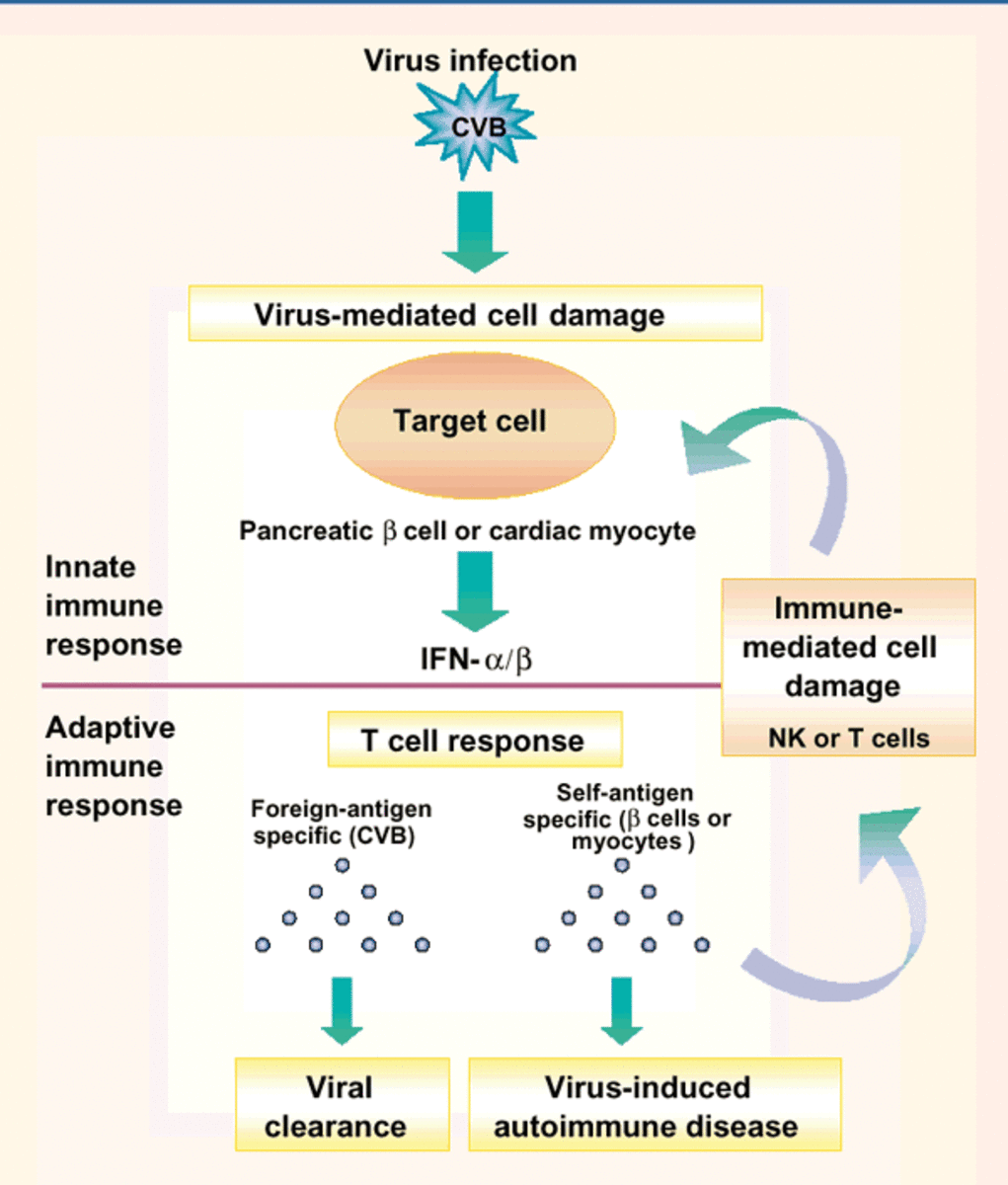Avian Influenza - A deadly intelligent virus that can jump between animals and humans.
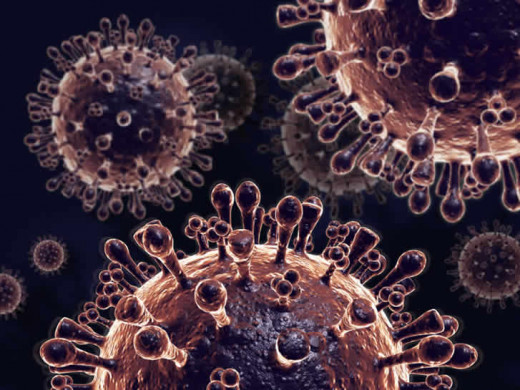
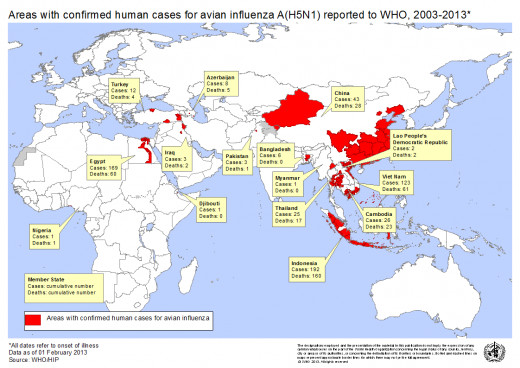
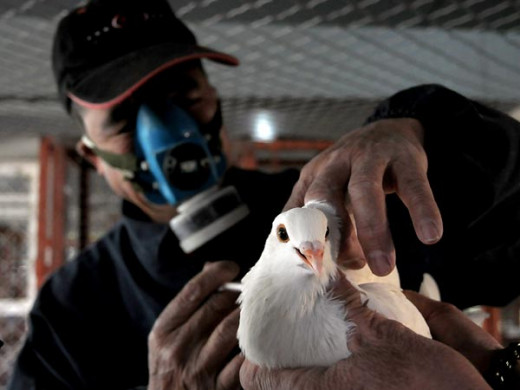

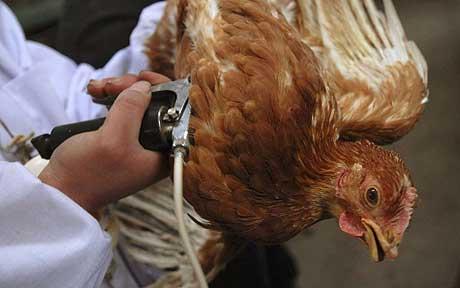
Avian Flu essential oil treatment
Avian flu (H5N1) is a highly pathogenic influenza A virus subtype, originally affecting wildfowl, ducks and geese which first made the genetic leap and started to infect humans in in Asia in 1997.
Much was written in the press about the potential pandemic threat and tremendous effort was put into producing a possible vaccine to counter the ever mutating virus.
Avian flu never resulted in the expected pandemic, although many victims, once infected, did die. The figures, published by the World Health Organisation (WHO), illustrate just how deadly the virus is:
Date of infection infected dead
2003-2009............ 468 .....292
2010.........................48 ......24
2011........................ 62 ......34
2012........................ 32...... 20
2013 to date............ 20...... 15
From the start, back in 2007 to date, a total of 630 people have been infected, of which 375 have died, a shocking rate of nearly 60%.
At one time everyone was happy that animal infections could not leap the species from animal to animal let alone animal to human. Influenza viruses circulating in the animal world do pose a threat to human health since they have mutated into a form that allows this. Humans can become ill when infected with viruses from animal sources, such as avian influenza virus subtypes H5N1 and H9N2 and swine influenza virus subtypes H1N1 and H3N2. The primary risk factor for human infection appears to be direct or indirect exposure to infected live or dead animals or contaminated environments.
As mentioned the first avian influenza in humans was reported in Hong Kong in 1997. It was called avian influenza (H5N1) as the outbreak was linked to ducks, geese and chickens. Since then there have been human cases of avian influenza A (H5N1) in Asia, Africa, Europe, Indonesia, Vietnam, the Pacific, and the near East with hundreds of people becoming sick with this virus and over half dying. At this point the chance of a pandemic seemed a serious possibility.
How to reduce the risk of becoming infected.
You should avoid travelling to countries where the virus is present, unless it is absolutely necessary.
You should avoid touching any dead or obviously ill bird.
Avoid visits to live-bird markets, either food or songbirds.
Use protective clothing and special breathing masks if you work with birds or bird processing.
You must avoid eating raw or undercooked poultry meat, eggs, or blood from infected or suspect birds. This is a good rule to follow generally as infected meat etc. is not obvious and raw or undercooked poultry often contains other bacteria that can make you very ill.
If you are a Health care worker ensure you use a mask and gloves and advise people who live in the same house, as infected people that they must take great care to avoid direct contact and use masks and gloves if possible and ensure surfaces are clean and disinfected regularly.
Avian flu virus (H5N1) can survive in the environment for long periods of time and infection can be spread just by touching surfaces that have the virus on them. Infected birds can pass the virus in their faeces and saliva for as long as 10 days.
There is no evidence that the virus can be passed to humans by eating properly cooked meat. There is also no evidence to suggest that the H5N1 virus can be transmitted to humans through properly prepared eggs. There has been a few human cases linked to consumption of dishes made from raw, contaminated poultry blood. However, slaughter, de-feathering, handling carcasses of infected poultry, and preparing poultry for consumption, especially in household settings, are likely to be serious risk factors.
Symptoms
The H5N1 virus in humans causes typical flu-like symptoms, such as:
Cough
Diarrhoea
Trouble breathing
Fever greater than 100.4°F (38°C)
Headache
General ill feeling (malaise)
Muscle aches
Runny nose
Sore throat`
Bleeding from nose and gums.
As you can see the initially symptoms are very similar to other variations of influenza and consequently more in-depth tests would need to be run. If you think you may have been exposed to the virus, call your doctor or A&E unit before your visit and do not travel on public transport. This will enable them to take steps to isolate you and protect themselves and other patients on your arrival. There are tests for the avian flu which can give results in about 4 hours but they are not widely available. More complex tests include: Auscultation (to detect abnormal breath sounds) Chest x-ray White blood cell differential, Nasopharyngeal virus detection by reverse transcription-polymerase chain reaction (RT-PCR), Nasopharyngeal culture and Throat virus detection by RT-PCR. Other parts of the body may be tested to check if your heart, lungs, kidneys, and liver are working correctly.
Prognosis (Outlook)
The outlook depends on the type of avian flu virus, how bad the infection is and the condition of the immune system of the infected person. . Avian flu hits much harder than normal and presents the body with a virus not previously encountered which can be fatal due to
Complications
Acute respiratory failure
Organ failure
Pneumonia
Sepsis
Treatment
In general, treatment with the antiviral medication oseltamivir (Tamiflu) or zanamivir (Relenza) may make the disease less severe. You need to start taking the medicine within 48 hours after your symptoms start for it to work. Oseltamivir may also be prescribed for persons who live in the same house people with avian flu. This may be sufficient to prevent them from getting the illness. The virus that causes human avian flu is resistant to the antiviral medicines amantadine and rimantadine. These medicines should not be used in the case of an H5N1 outbreak occurs. People with severe infection may need to be placed on a breathing machine. People infected with the virus also should be kept strictly isolated from non-infected people.
Some doctors recommend that people are given an influenza (flu) vaccination. This may cut down the chance that the avian flu virus will mix with a human flu virus, however, there is a chance that this might create a new mutated virus that may easily spread with no protection.
Natural remedies
Astragalus - This has been part of Chinese medicine for centuries, Astragulus is an immune-enhancing herb that strengthens the body. It supports the bone marrow by increasing the production of interferon and building disease-fighting blood cells enabling an individual to resist and fight serious viral infections..
Echinacea - Similarly Echinacea has been used to combat viral infections for centuries and is also used as a blood purifier and immune system stimulant.
Garlic - This is a powerful natural supplement with outstanding ability to protect against viral and bacterial infections.
Forsythia and Honeysuckle - Forsythia and honeysuckle are two herbs frequently used in Chinese medicine, mixed with lemon balm, to make a soothing tea that helps ward off viral infections. Available in tablet form.
Turmeric - The compound curcumin, from turmeric, is anti-inflammatory and relieves fever while reducing some of the lethal effects of viral infections including bird flu. Available in capsule form.
Blue Green Dragon - This is a blend of eight potent Chinese herbs found to be highly effective against bird flu virus. . One of the main herbs present is Ma Huang or Ephedra. Its main action dilates the bodies pores allowing sweating, which encourages the release of toxins. Ma Huang has been banned in the U.S. by the FDA; however, there are other herbs and supplements that have similar action and can be taken along with the remaining Blue Green Dragon formula maintaining its efficacy. Both cayenne pepper and the B-vitamin niacin dilate surface capillaries in the skin, opening pores and causing sweating. This product can have significant side-effects and you should discuss its use with your doctor first.
Olive Leaf Extract - Both antibacterial and anti-viral, olive leaf extract is a strong immune system enhancer, supporting the blood and lymphatic systems to fight viral infections. Available in capsule form.
Colloidal Silver - This is a broad spectrum anti-viral remedy. Colloidal silver is one of the oldest remedies in the World.
Essential oils:
Because of the rapid mutation potential, modern medicine can, at best, offer only short-term protection. Therefore, it may be worth looking at what essential oils can provide, particularly when the latest vaccines may not be available for some time, if ever.
Use 10 drops each of essential oils oregano, thyme, juniper, green tea, chypre, eucalyptus, pyrethre, sandalwood and basilic.
Blend in a small mixing bottle with a dropper and preferably use on a cassette in an essential oil fan or alternatively in a cheap evaporator. Oregano is the most important oil to use and potentially could be used on its own if the others aren’t immediately available.
Over the years Avian flu has mutated further into even more difficult forms which current anti-virals have difficulty dealing with. As we have mentioned before, viruses cannot mutate into forms essential oils cannot deal with. By all means use the pharmaceutical drugs available but if they are ceasing to work make sure you have a stock of the oils mentioned above.
Take great care if using an evaporator with a naked flame as the essential oils and their vapours are flammable Never sleep in a room where a naked flame evaporator is being used due to the fire risk.
Current information regarding avian flu is available at
(USA site) http://www.flu.gov/#
or (UK site) http://www.hse.gov.uk/biosafety/diseases/influenza.htm
Are you concerned about a possible pandemic of Avian flu
© 2012 Peter Geekie




